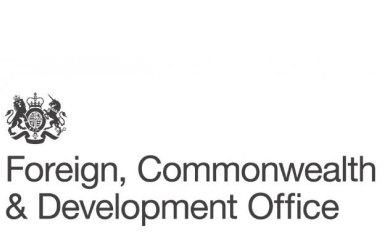ISO 19650 is the prominent global standard for the implementation of BIM, focusing on the collaborative process integral to the entire life cycle of constructed assets. Developed and published by the International Organization for Standardization (ISO), this standard serves as a comprehensive framework for managing information from the conception of a project, through construction and operation to its eventual decommissioning. The development and publication of ISO 19650 highlights the commitment of international standards bodies to creating a consistent and efficient approach to BIM implementation on a global scale.
ISO 19650 is a multi-part standard. Part 1 delineates fundamental concepts and principles, while Part 2 provides practical guidance for information management throughout the project life cycle. The scalability of ISO 19650 allows organizations to tailor its application to the specific needs and intricacies of their projects. As an internationally recognized standard, ISO 19650 reflects the collaborative efforts of standards bodies to enhance global construction industry practices. Throughout this process, transparency, collaboration, and consensus-building are key principles. ISO standards, including ISO 19650, are developed with input from experts and stakeholders worldwide to ensure that they reflect a global consensus on best practices.
A country might choose to adopt ISO 19650 for several reasons, all of which contribute to the standard’s potential benefits in enhancing the efficiency and effectiveness of construction and infrastructure projects. Some of the reasons why a country might decide to adopt ISO 19650:
- Global standardisation of processes
- Support interoperability and collaboration
- Consider a quality assured approach to information management
- Competitive advantage and potential for cross boarder trade
- Improved project delivery outcomes
In summary, the adoption of ISO 19650 by a country can bring about international alignment, improved collaboration, risk reduction, and enhanced competitiveness in the construction industry, ultimately contributing to more successful and sustainable infrastructure development. Countries will usually adopt ISO 19650 by publishing a national annex to the standard.
buildingSMART Chapter Slovenia is a local branch of the international organization buildingSMART International (bSI), which is the leading initiator of the development of “open BIM” standards in the field of digitalization of the built environment. buildingSMART Chapter Slovenia operates within the Association for Information Modeling of Construction, siBIM. The mission of the buildingSMART Chapter Slovenia is the promotion of open BIM in Slovenia and everything related to it: support for the development of open standards in bSI and local promotion and implementation at home. The main goal is to educate the stakeholders involved, to implement current transfers of information and data within BIM processes with the help of developed open standards, especially between all software tools.
BuildingSMART Chapter Slovenia has set itself the following specific tasks for the period 2021 – 2023:
· Raising awareness and educating the Slovenian professional public about the importance of open BIM standards;
· Active participation in local initiatives related to the digitization of the built environment;
· Organizing the implementation of bSI educational programs and certifications;
· Encouraging and involving our members in working groups within bSI;
· Cooperation with other Chapters and exchange of experiences.
The number of projects where the BIM approach is required in design and construction is now constantly increasing in Slovenia, for now even more pronounced in the private sector than in the public sector. With this guide, everyone who prepares tender documents for contracting authorities will have an easier solution and a transparent tool for preparing BIM approach requirements, while providers of these services will know exactly what they need to produce and deliver to the contracting authority under the contract. This manual will serve all those involved in investments: clients, consultants, designers and contractors. Above all, it will serve all engineers and architects who will use the BIM approach and thus increase efficiency in the implementation of investments for clients.
This document is intended for clients of investments in the field of construction, which in the project task include the BIM approach. The functional and content requirements of the project are defined in the basic project assignments. This document (Requirements of the contracting authority for the development of the BIM model) is an annex to the basics of the project task and thus an integral part of the tender documentation. The recommendations set out in document, should be adapted to the specific requirements of the project and serve only to assist in planning the implementation of the BIM approach in the project. The document summarizes the contents of various national guidelines, which are adapted on the basis of experience from pilot BIM projects implemented in Slovenia.
https://www.izs.si/assets/media/izsnovo/2019/IZS_prirocnik_MSG_BIM_pristopa_za_gradnje_www.pdf
An archive version of this information article has been created if the original is no longer accessible (Archive information from January 2024)
The Building Act (GZ-1) was published and adopted by the National Assembly of he Republic of Slovenia in December 2021. This law governs the conditions for the construction of buildings and other issues relating to the construction of buildings.
The purpose of this Law is to protect the public interest in the construction of buildings. The public interest referred to shall include, in particular, the safety of buildings, respect for the principle of equal opportunities, protection of the environment, nature conservation, protection of waters, protection of cultural heritage, promotion of sustainable construction, coherence of the placement of buildings in the space, architecture as an expression of culture, recording, usefulness, efficiency, quality of the buildings and their consistency with the environment throughout their life cycle. The act mentions that, project documentation for the facilities referred to in this Law are to be produced by means of information-based design (BIM).
https://www.uradni-list.si/1/objava.jsp?sop=2021-01-3972
An archive version of this information article has been created if the original is no longer accessible (Archive information from January 2024)
The Slovenian Association for Information Modelling of Works (abbreviated name is Association siBIM, abbreviated as siBIM) is a voluntary, independent, and non-profit organisation that brings together engineers and supporters of engineering fields who actively participate or want to participate in information modelling of buildings of the built environment (BIM), with the aim of organized integration and education, professional development, mutual socialization and exchange of experience. The association was founded on 30.1.2015 in Ljubljana on the initiative of individuals from the construction industry and the university. The founding assembly was home to 32 interested engineers and experts from all over Slovenia who represented the fields of civil engineering, architecture, mechanical engineering, ICT, economics, etc.
The objectives of the association are to:
– Education and information of members and the general public on information modelling of the built environment (BIM approaches, BIM-technologies), its practical application and developments in this field.
– Organisation of education, consultations, workshops and conferences on information modelling (BIM) of the built environment.
– Organisation and assistance in the preparation of working groups, preparation of guidelines and recommendations for the profession.
– Providing examples of good practice in the field of information modelling (BIM) of the built environment and promoting the exchange of experience between members.
– Representation of the interests of all Slovenian sectors operating in the field of information modelling (BIM) of the built environment at international level.
– Cooperation in the preparation of guidelines and regulations in the field of information modelling of the built environment.
– Connecting with related associations in the world.
The siBIM website contains information on how to join the association as well as lots of other useful information for BIM adoption relevant to Slovenia. The site contains information about the association, news and current events. As well as this information there is also a document collection which shares useful info such as the manual for the implementation of BIM and the Guide to introducing information modelling in the European public sector.


